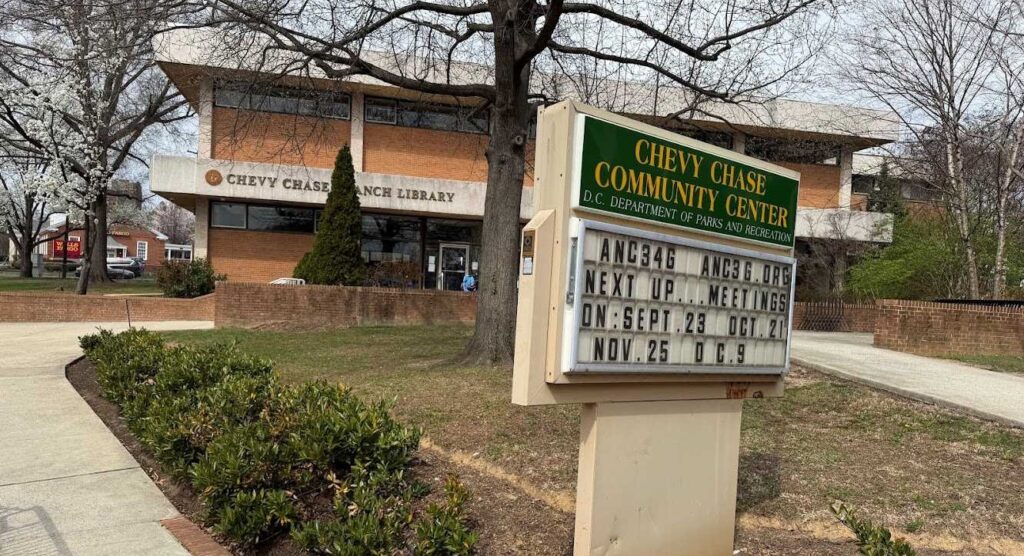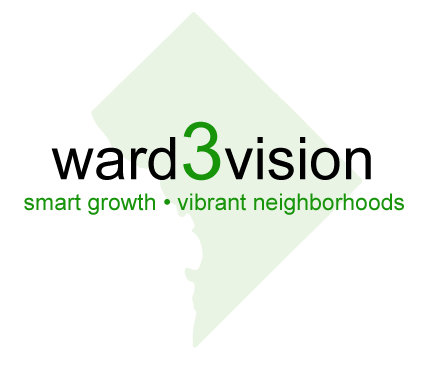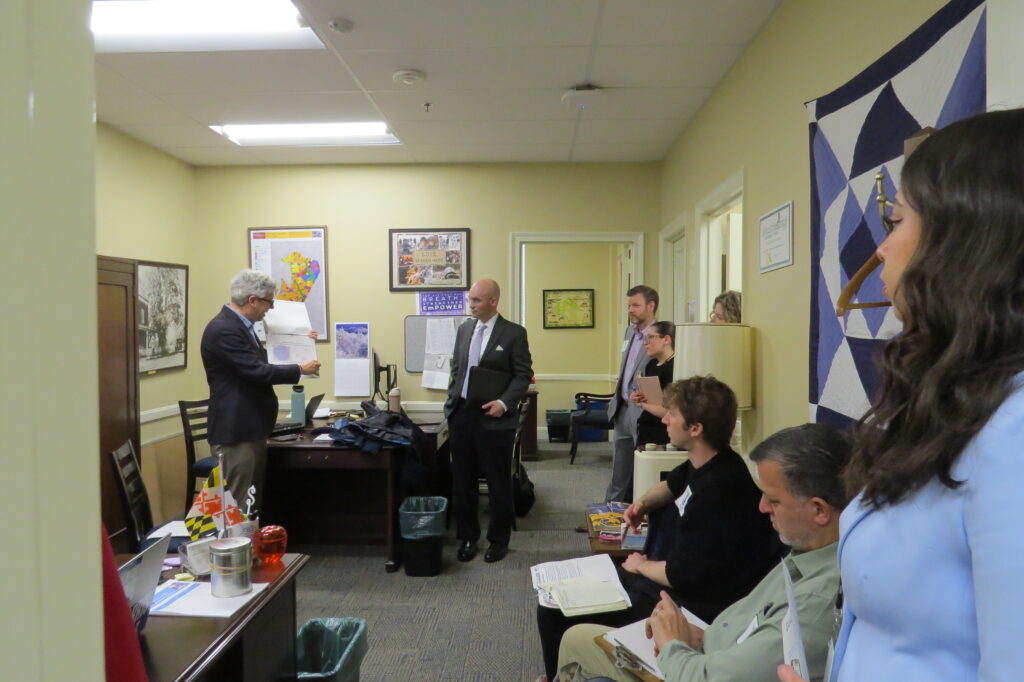Support affordable housing along with a new library and community center in Chevy Chase DC
Category: Affordable Housing

Check out the 8 new visions for the future of Chevy Chase DC civic core


CSG in the News: Elrich vows to push back on approved More Housing N.O.W. legislation
“Every new home helps, but the Council must also adopt the other tools in the package to meet our county’s great housing need. Most important is the approach reflected by [the ZTA] —making it much easier to build duplexes, triplexes, and small apartments near transit and jobs,” Carrie Kisicki, Montgomery advocacy manager for the Coalition for Smarter Growth, wrote in an email statement to Bethesda Today.

Written Recommendations: MoCo’s More Housing N.O.W. Package
March 11, 2025
Montgomery County Council
100 Maryland Ave
Rockville, MD 20850
More Housing N.O.W. Package
ZTA 25-02, Workforce Housing – Development Standards
ZTA 25-03, Expedited Approvals – Commercial to Residential Reconstruction
SRA 25-01, Administrative Subdivision – Expedited Approval Plan
Expedited Bill 2-25, Taxation – Payments in Lieu of Taxes – Affordable Housing Amendments
Thank you for the opportunity to share testimony on behalf of the Coalition for Smarter Growth. CSG advocates for building walkable, bikeable, transit-oriented communities with housing all people can afford is the most sustainable and inclusive way for the D.C. metro region to grow.
I am writing to offer our support for the More Housing N.O.W. package, and to thank the sponsors for stepping up and showing Montgomery County is ready to do what is needed to address our housing crisis.
We can’t afford to wait for housing action.
Montgomery County has a strong record of supporting subsidized affordable housing, including making historic commitments to funding for affordable housing these past few years.
We have not been innovators in the same way in making sure our county has homes that are affordable to our middle class, young people, older adults looking to downsize, and others who do not qualify for affordable housing—yet are increasingly unable to find market-rate homes they can afford amongst our limited housing options.
Our current zoning policies have severely restricted the number and variety of homes available near jobs and transit across our county. As a consequence, we are losing people who would like to live and work in this county yet must turn to other places where they can find housing they can afford.
- This trend hurts our ability to attract and retain a strong workforce, and sustain the robust tax base needed to offer critical services and programs.
- It is making homeownership in Montgomery County an increasingly exclusive proposition. Home prices across the county have been rising faster than inflation for two decades, and only households earning $150k or more increased their rate of homeownership rates between 2010 and 2021 while rates of homeownership for all other income bands declined.
- This trend also undercuts our climate goals by forcing people who work in Montgomery County to live farther from their jobs and from convenient transit options—leading to longer commutes, greater pollution from vehicle emissions, and increased demand for sprawl development in other jurisdictions to fill the housing demand that our county is failing to meet.
More Housing N.O.W. offers promising new approaches to create the housing our county needs.
The proposals in the More Housing N.O.W. package will help expand the supply and variety of housing types available near jobs and transit—giving more people with a wider range of household sizes and needs the opportunity to live in Montgomery County.
Allowing a Greater Variety of Housing Types
CSG strongly supports the approach of building a wider variety of housing types in sustainable locations with access to transit and jobs, as proposed by ZTA 25-02.
- Detached single-family homes remain the most expensive housing option in the county. As of February 2025, the median sale price for a detached single-family home in Montgomery County was $835,000, while the median sale price for a townhouse was $500,000, and $279,000 for condos/co-ops.
- To make housing and homeownership affordable for more people, it follows that we need to offer more options that better align with people’s varied incomes and needs.
- We support expanding housing choices to allow for duplexes, triplexes, and other small multi-family buildings that can accommodate more people and meet a wider range of housing needs than detached single-family homes alone.
Office-to-Residential Conversions
We also support efforts to facilitate office-to-residential conversions when feasible, as provided for by ZTA 25-03, SRA 25-01, and Expedited Bill 2-25.
- As work trends and housing needs shift, our land use policies need to keep up. These bills will provide greater flexibility to ensure parcels with underused office space can be adapted to best serve community needs.
- Office-to-residential conversions are often uniquely complex and costly due to the challenges of converting a building or site not previously designed for residential use to meet residential standards. Offering support through a PILOT, as outlined in Expedited Bill 2-25, may help projects that are highly desirable and appropriate for a given site, yet may not otherwise be financially feasible, get across the finish line.
Additional recommendations
CSG supports the measures in the More Housing N.O.W. package, and thank its sponsors for standing with a broad and diverse coalition of Montgomery County organizations and individuals who recognize that we need bold action and new approaches to create the housing our county needs.
We also offer the following recommendations to even better achieve our shared goal of creating more affordable homes for all people in sustainable locations in Montgomery County.
ZTA 25-02, Workforce Housing – Development Standards
- Include corner lots along included corridors: We support this ZTA’s intent of supporting corridor-focused growth, and note that some corner lots located on included corridors are currently excluded from this ZTA if their address is on a side street rather than on the corridor itself. For consistency, we recommend including these corner lots in the ZTA as well.
- Support homes near transit: This ZTA will help create more homes with access to jobs and economic opportunity. This benefit can be amplified by allowing a wider variety of homes near rail stations as well as on major county corridors.
We ask the Council to consider expanding the coverage of this ZTA to also apply to R-40, R-60, R-90, and R-200 lots in strategic locations near rail stations—particularly the Purple Line and MARC, excluding lots contained within the Agricultural Reserve.
Workforce Housing Opportunity Fund
- We support this proposed fund, and ask that the Council hold firm in its commitment to allocating the $4 million in proposed funding for the program as new funding that is additive to the total funding in the HIF, not diverted from other HIF programs.
Further Recommendations and Areas for Analysis
We raise the following as potential areas for additional analysis to make sure the policies in this package achieve their intended goals as effectively as possible. We strongly encourage the Council to turn to affordable housing organizations and the Montgomery Housing Alliance as a resource in considering these matters.
- Building height: In ZTA 25-02, are there sites where the 40 foot height limit may be more restrictive than what existing stepdown requirements addressing limits on building height would allow? Could modestly increasing this height limit to align with standards for existing examples of housing types like townhomes and small apartment buildings in the county allow for the production of additional homes?
- Reducing costs to create workforce-level homes: The amount of cost and uncertainty associated with development approval processes and requirements can make or break the feasibility of building a new housing project—especially those with subsidized affordable homes.
We recommend consulting with experienced affordable housing developers regarding the development review process and the targeting (both in terms of unit percentage and AMI) of income restrictions proposed in ZTA 25-02 in order to help identify the most strategic pathways to expeditiously producing workforce income-level homes.
Sincerely,
Carrie Kisicki
Montgomery County Advocacy Manager
Photo: Montgomery County Council

Take action! Contact your representatives to support the Maryland Housing for Jobs Act
Support the 2025 Housing for Jobs Act!

Maryland has a housing shortage that is making it harder for people to afford to live here and is holding back our economy per this state report. And even when people have managed to find a more affordable home, it’s often been in outer areas far from jobs and services, meaning more sprawl, more driving, higher transportation costs, and more climate pollution.
The Housing for Jobs Act (HB 503/SB 430) would set regional housing targets based on the number of jobs in a given set of counties grouped by their area of the state. It would set clear standards for approving and denying new housing when counties haven’t met their housing to jobs ration, giving extra credit to localities who create housing near transit and to those who create affordable housing.
Click here to read CSG’s testimony, and use the buttons above to contact your state representatives to ask them to support the Housing for Jobs Act!
Photo credit: Carrie Kisicki
CSG in the News: MoCo residents polarized over proposed workforce housing legislation
March 11, 2025 | Ginny Bixby | Bethesda Magazine
Supporters who spoke at the hearing in general praised the legislative package’s aim to increase the county’s housing supply and create realistic homeownership opportunities for more county residents.
“It’s a plain and simple fact that our county needs more housing,” said Carrie Kisicki, Montgomery advocacy manager for the Coalition for Smarter Growth, a Washington, D.C. metro region nonprofit focused on housing affordability and transit access. “People want housing that they can afford, and they do not want to have to spend their lives sitting in traffic just to get to work.”

Testimony: Support for the Flats at Glenridge Station, DSP-23008 & DDS-24002 (Prince George’s)
March 10, 2025
Mr. Peter Shapiro, Chair
Prince George’s County Planning Board, M-NCPPC
1616 McCormick Drive, Largo MD
Via: pgcpb@mncppc.org
RE: Support for the Flats at Glenridge Station, DSP-23008 & DDS-24002
Dear Chair Shapiro and members of the Board:
Please accept this testimony on behalf of the Coalition for Smarter Growth (CSG). CSG advocates for walkable, bikeable, inclusive, transit-oriented communities as the most sustainable and equitable way for the Washington, DC region to grow and provide opportunities for all. We work extensively in suburban Maryland, focused on Prince George’s and Montgomery counties.
We would like to express our support for the Flats at Glenridge, DSP-23008 & DDS-24002. The proposed 245-apartment building, with a small amount of office space, offers families affordable homes right next to the Glenridge Purple Line station, along with close proximity to retail, including a supermarket. The site is less than a quarter mile from the station and MD 450, and by direct connection would be about 300 feet from the station.
This proposal is the first major step towards implementing the vision for a walkable Glenridge Transit Village outlined in the Annapolis Road Sector Plan. The apartment building offers amenities like a playground and a plaza with landscaping. Most importantly, these 245 homes give moderate and low income families the opportunity to live next to a rail transit station, and local-serving retail.
This affordable transit-oriented development helps more people rely on sustainable transportation options and reduce the need to drive or own a car. We appreciate the unit mix offering a variety of unit sizes, including many 3-bedroom apartments.
The project provides important contributions to county and community goals, including:
- Affordability – the proposal will provide homes affordable at and below 60% of median family income. These are quality, new 1-, 2- and 3-bedroom homes to address residents’ need for low-cost housing. Transit-accessible housing also reduces household transportation costs;
- Environmentally-friendly location – allowing more families to live here in a compact, walkable environment reduces traffic, pollution and crashes by giving households options to walk and ride transit more, and drive less;
- Better communities with transit-oriented development – more homes in this location, inside the Beltway and next to rail transit and existing retail, helps to transition this area to the envisioned Glendridge Transit Village where more homes and businesses can be focused in a walkable, transit-oriented environment. A vibrant, walkable Glenridge Transit Village will benefit nearby neighbors who can enjoy better retail options, a more human-scaled environment, and transportation choices.
We recognize that the site is currently wooded, but it is a fragment surrounded by development. Allowing more people to live here, steps away from frequent rail transit at this inside the Beltway location means less driving, traffic and pollution for households who otherwise might have to live elsewhere. Additionally, the project will fund offsite forest conservation to offset trees removed from the site, while providing modern stormwater management onsite to control runoff and water quality.
We have two recommendations for improving this project:
- Securing a direct walk pathway from the building to the Purple Line station entrance.
- Reducing parking and allocating that space and cost savings to other benefits for residents. The large amount of parking — 337 spaces for 245 units is a 1.37 ratio. Development standards reduce by half the required amount due to the site’s proximity to transit.
Conclusion
We urge the Planning Board to approve this application as a major step forward for the Glenridge Transit Village and the benefits it will provide to the larger community and county.
Thank you for your consideration.
Sincerely,
Cheryl Cort
Policy Director

Alert: Support affordable transit-oriented housing at Glenridge Purple Line station in Prince George’s
Send a message to the Prince George’s Planning board by Tuesday, March 11, 12 noon
We’ve advocated for the Purple Line. We’ve advocated more affordable housing – especially at rail transit. Well, here it is! The first new affordable apartments steps away from the Glenridge Purple Line station. Please join us in voicing our support!
This proposal for 245 affordable apartments, right next to the Purple Line, is the first step towards realizing the planned Glenridge Transit Village. It will provide homes for low and moderate income households in a location that will reduce how much residents have to drive and spend on transportation.
Much more needs to be done by the county and state to transform this very suburban, automobile-dominated area into a walkable community, but this project is a good first step. We’re asking for the amount of parking to be reduced for this project and for a direct walking connection to the transit station. And, we will be pressing the county and state to make it safer to walk and bike to this and every Purple Line station.
We recognize that the site is currently wooded, but it is a fragment surrounded by development. Allowing more people to live here, steps away from frequent rail transit at this inside the Beltway location means less driving, traffic and pollution for households who otherwise might have to live elsewhere. Additionally, the project will fund offsite forest conservation to offset trees removed from the site, while providing modern stormwater management onsite to control runoff and water quality.
Want to know more? Check out the Prince George’s Planning Board March 13, 2025 Agenda Packet on the Flats at Glenridge Station.

Testimony: Maryland Housing for Jobs Act (HB 503/SB 430) – Support
Location matters when we build new housing. The Housing for Jobs Act will help to produce more of the homes Maryland needs in strategic locations tied to our transit network, our environmental health, and our economic success.

Release: This is smart growth! Creating a vibrant, walkable Oakton, Fairfax VA
CSG and allies support transformation of the old AT&T office building and its acres of parking. CSG is joined by the Sierra Club, Chesapeake Climate Action Network, Fairfax Alliance for Better Bicycling, Fairfax Families for Safe Streets, Faith Alliance for Climate Solutions, Nature Forward, Northern Virginia Affordable Housing Alliance, and YIMBYs of NoVA.
